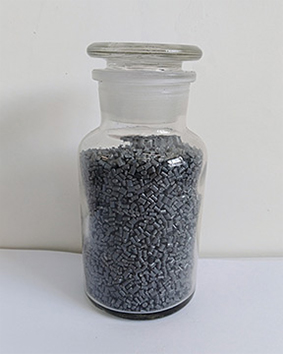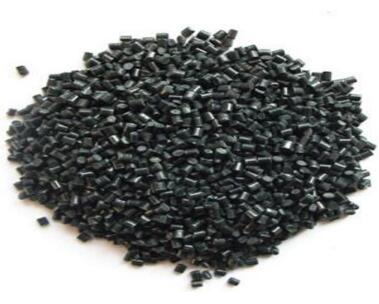ABS plastics are widely used, but also have a great comprehensive performance. Let's take a look at the processing steps of ABS plastics
(1) Drying of ABS plastics
ABS plastics have high moisture absorption and sensitivity to moisture. Sufficient drying and preheating before processing can not only eliminate the fireworks like blisters and silver wires on the surface of the parts caused by water vapor, but also help to plasticize the plastics and reduce the color spots and moire on the surface of the parts. The moisture content of ABS raw material should be controlled below 013%. The drying conditions before injection molding are as follows: dry winter season below 75-80 ℃, drying for 2-3 hours, summer rainy days at 80-90 ℃, drying for 4-8 hours. If the parts want to achieve excellent luster or the parts themselves are complex, the drying time is longer, up to 8-16 hours. Because of the existence of micro water vapor, the fog spot on the surface of parts is often ignored. It is better to refit the hopper of the machine into a hot air hopper dryer, so as to prevent the dry ABS from absorbing moisture again in the hopper. However, the humidity monitoring should be strengthened for this kind of hopper to prevent the material from overheating when the production is interrupted occasionally.
(2) Injection temperature
The relationship between temperature and melt viscosity of ABS plastics is different from other amorphous plastics. However, once the plasticizing temperature (suitable temperature range for processing, such as 220-250 ℃), if the temperature continues to rise blindly, it will lead to the thermal degradation of ABS with low heat resistance. On the contrary, the melting viscosity will increase, the injection molding will be more difficult, and the mechanical properties of the parts will also decline. Therefore, although the injection temperature of ABS is higher than that of polystyrene and other plastics, it can not have a more relaxed heating range like the latter. Some injection molding machines with poor temperature control often find yellow or brown coking particles embedded in the parts when they produce a certain number of ABS parts, and it is difficult to remove them by adding new materials into air injection.
The reason is that ABS plastic contains butadiene. When a certain plastic particle adheres firmly to some surface which is not easy to be washed out in the screw groove at high temperature, it will degrade and carbonize under the action of long time high temperature. Since the high temperature operation may cause problems to ABS, it is necessary to limit the furnace temperature of each section of the drum. Of course, the applicable furnace temperature of ABS with different types and compositions is also different. For example, the furnace temperature of plunger type machine is maintained at 180-230 ℃, and that of screw machine is maintained at 160-220 ℃. It is worth mentioning that because of the high processing temperature of ABS, it is sensitive to the changes of various process factors. Therefore, the temperature control of the front end of the barrel and the nozzle is very important. It has been proved that any minor changes in these two parts will be reflected in the parts. The greater the temperature change, it will bring weld seam, poor gloss, flash, die sticking, color change and other defects.
(3) Injection pressure
The viscosity of ABS melt parts is higher than that of polystyrene or modified polystyrene, so higher injection pressure is used in injection. Of course, not all ABS products should be applied with high pressure, and low injection pressure can be used for small, simple and thick parts. In the process of casting, the pressure in the cavity at the moment of gate closure often determines the surface quality and the degree of silver wire defects. If the pressure is too small, the plastic shrinkage is large, and the chance of contact with the cavity surface is large, and the surface of the part is atomized. If the pressure is too high, the friction between the plastic and the surface of the cavity is strong, which is easy to cause die sticking.
(4) Injection speed
The results show that the effect of ABS material with medium injection speed is better. When the injection speed is too fast, the plastic is easy to scorch or separate out gasses, resulting in weld seam, poor gloss and red plastic near the gate. However, in the production of thin-walled and complex parts, it is still necessary to ensure that the injection speed is high enough, otherwise it is difficult to fill.
(5) Mold temperature
ABS molding temperature is relatively high, mold temperature is also relatively high. Generally, the mold temperature is adjusted to 75-85 ℃. When the workpiece with large projection area is produced, the fixed mold temperature is required to be 70-80 ℃, and the dynamic mold temperature is required to be 50-60 ℃. In the injection of large, complex and thin-walled parts, special heating of the mould should be considered. In order to shorten the production cycle and maintain the relative stability of mold temperature, cold water bath, hot water bath or other mechanical shaping methods can be used to compensate the time of cold fixation in the mold cavity after the parts are taken out.
(6) Material quantity control
When ABS plastic is injected into general injection molding machine, the injection volume is only 75% of the standard injection volume. In order to improve the quality and dimensional stability of the product, the surface luster and color uniformity, the injection volume should be 50% of the calibrated injection volume.
Professional production--global recycling standard GRS certification






 Current location:
Current location:





